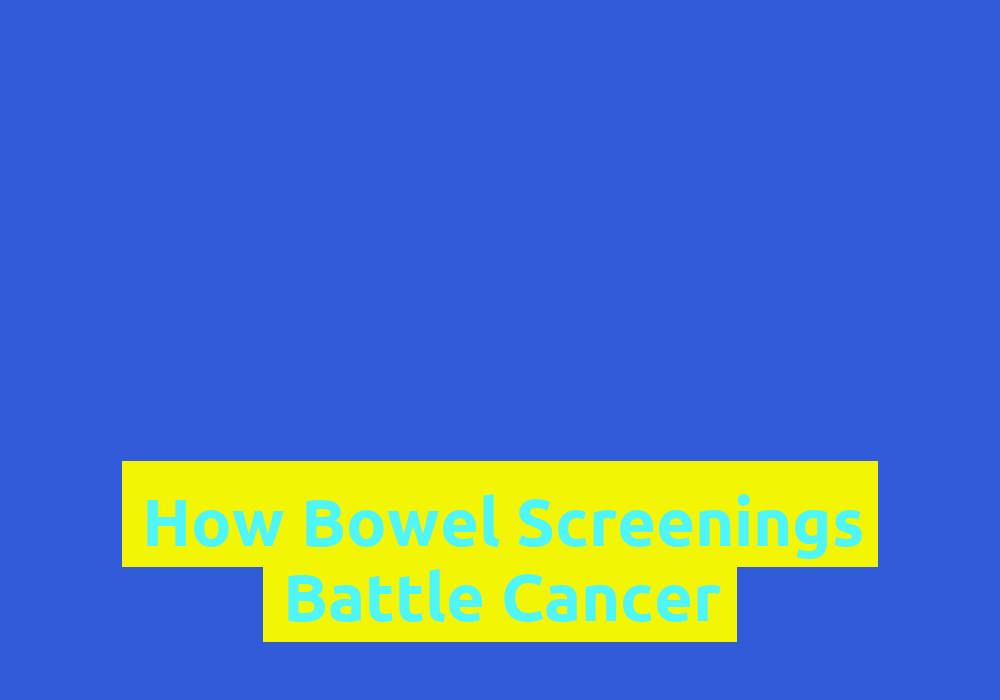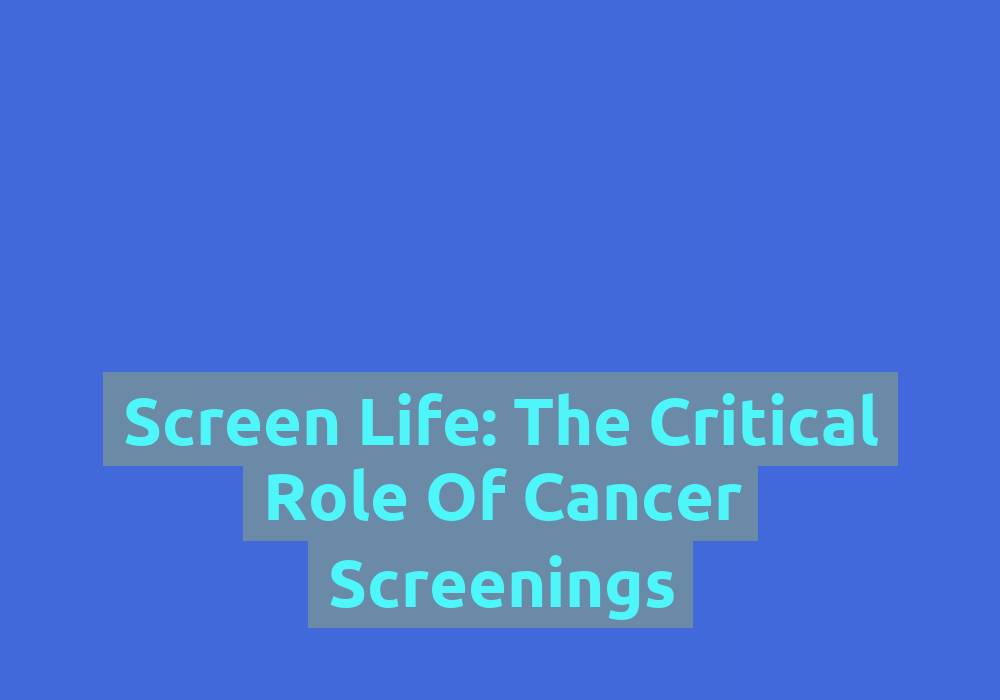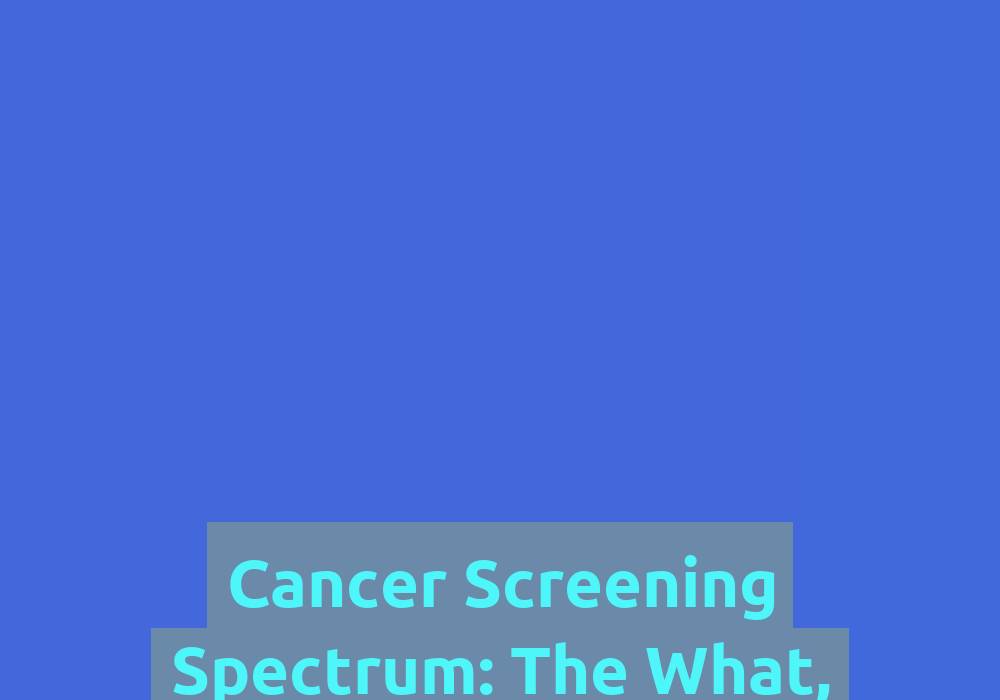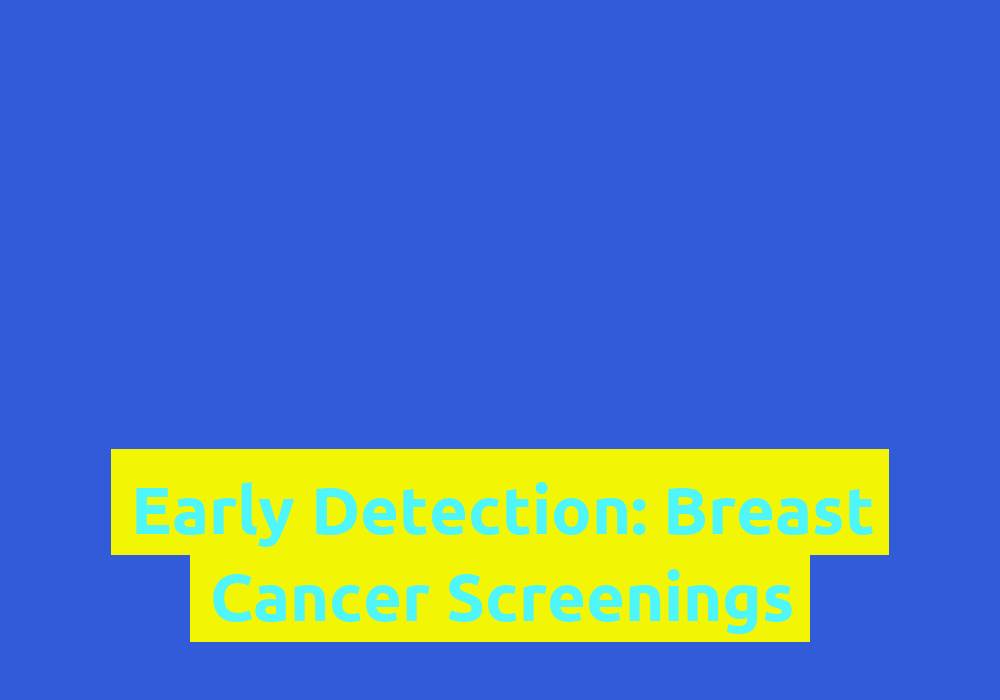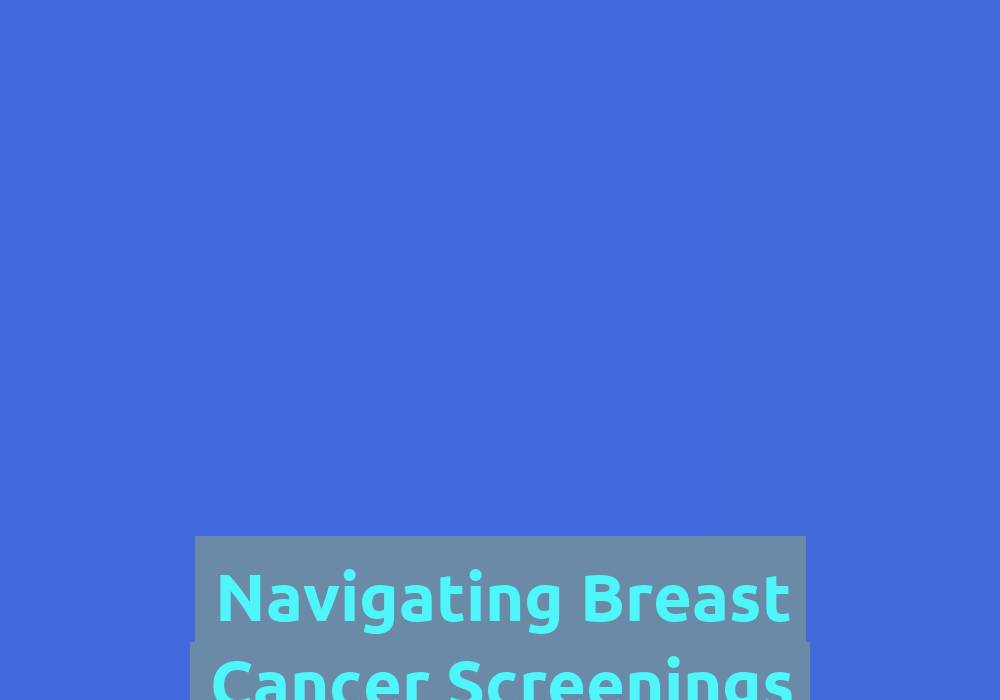Importance of Colorectal Screenings

Colorectal screenings play a crucial role in the early detection and prevention of colorectal cancer, which is one of the most common and deadly types of cancer worldwide. These screenings help identify any abnormal growths or changes in the colon or rectum, allowing for timely intervention and treatment. In this article, we will delve deeper into why colorectal screenings are important, how they are performed, and who should undergo them.
Why are Colorectal Screenings Important?
-
Early Detection: Colorectal screenings can detect precancerous polyps or early-stage colorectal cancer before symptoms even appear. Early detection is crucial because it allows for prompt treatment, preventing the development of cancer and significantly increasing the chances of successful outcomes. By identifying and removing polyps at an early stage, the risk of progression to cancer can be minimized.
-
Reducing Mortality: Colorectal cancer is the third leading cause of cancer-related deaths worldwide. Regular screenings can help reduce mortality rates by identifying cancer at an early stage when treatment options are more effective. Studies have shown that individuals who undergo regular screenings have a lower risk of dying from colorectal cancer compared to those who do not participate in these screenings. By catching the disease early, healthcare professionals can implement appropriate treatments, improving survival rates.
-
Improved Treatment Options: When colorectal cancer is detected early, there are more treatment options available, including less invasive procedures and a higher likelihood of successful treatment outcomes. Surgical treatment, chemotherapy, radiation therapy, and targeted therapies are among the options that can be considered. Regular screenings enable healthcare professionals to catch the disease at its earliest stages, maximizing the chances of successful treatment. It is important to note that treatment options may vary depending on individual circumstances and the stage of cancer.
-
Prevention through Polyp Removal: During a colonoscopy, if precancerous polyps are discovered, they can be removed immediately. This preventive measure reduces the risk of these polyps developing into cancer over time. Polyps are abnormal growths in the lining of the colon or rectum, and while most polyps are benign, some may progress to cancer if left untreated. By removing these polyps during a screening, the risk of future complications can be significantly reduced.
Types of Colorectal Screenings
-
Colonoscopy: Considered the gold standard for colorectal screenings, a colonoscopy involves the insertion of a flexible tube with a camera into the rectum and colon to visually examine the entire length of the colon. This procedure allows for the detection and removal of polyps, as well as the evaluation of any abnormalities or signs of cancer throughout the colon. It is an effective screening method that provides a comprehensive assessment of the colon’s health.
-
Flexible Sigmoidoscopy: Similar to a colonoscopy, this screening method utilizes a flexible tube with a camera to examine only the lower part of the colon. It is less invasive than a colonoscopy and may be a suitable alternative for individuals who cannot undergo a full colonoscopy. However, if any abnormalities are detected, a subsequent colonoscopy may be required to evaluate the entire colon.
-
Fecal Occult Blood Test (FOBT): This non-invasive test checks for hidden blood in the stool, which may be a sign of colorectal cancer. It involves collecting small samples of stool and sending them to a laboratory for analysis. The FOBT is a simple and cost-effective screening method that can be done at home. However, it is important to note that a positive FOBT result does not necessarily indicate the presence of cancer but rather the need for further diagnostic tests.
-
Virtual Colonoscopy: Also known as CT colonography, this screening method uses special x-ray equipment to create 3D images of the colon. It is less invasive than a traditional colonoscopy as it does not require the insertion of a tube into the rectum. However, if abnormalities are detected during a virtual colonoscopy, a subsequent colonoscopy may still be necessary for further evaluation and treatment.
Who Should Undergo Colorectal Screenings?
-
Age Recommendations: The American Cancer Society recommends that individuals at average risk for colorectal cancer should start regular screenings at the age of 45. However, those with a family history of colorectal cancer or certain genetic conditions should consider screening at an earlier age. It is important to consult with a healthcare professional to determine the most appropriate screening schedule based on individual risk factors.
-
Frequency of Screenings: The frequency of screenings depends on the type of screening method used and other risk factors. For instance, a colonoscopy is typically recommended every 10 years for average-risk individuals, while other screening methods may need to be performed more frequently. Regular screenings ensure that any changes or abnormalities in the colon are promptly detected and addressed.
-
Personal and Family History: Individuals with a personal history of colorectal cancer, polyps, or inflammatory bowel disease have a higher risk and should undergo screenings more frequently. People with a family history of colorectal cancer are also at a higher risk and may need to start screenings earlier. Genetic conditions, such as Lynch syndrome or familial adenomatous polyposis, can further increase the risk and require specialized screening protocols.
-
Lifestyle Factors: Several lifestyle factors can increase the risk of developing colorectal cancer. These include a diet high in red and processed meats, lack of physical activity, obesity, smoking, and heavy alcohol consumption. Individuals with these risk factors should consider regular screenings to detect any potential abnormalities in the colon at an early stage.
Conclusion
Colorectal screenings are of paramount importance in the early detection and prevention of colorectal cancer. By identifying precancerous polyps or early-stage cancer, these screenings significantly improve the chances of successful treatment and reduce mortality rates. Early detection plays a crucial role in the fight against colorectal cancer, as it allows for timely intervention and a greater range of treatment options. The various screening methods available cater to different individuals and risk factors, ensuring that everyone can undergo appropriate screenings. Remember, don’t hesitate to schedule your screening today to prioritize your health and well-being in the battle against colorectal cancer.
FAQ
Colorectal screenings are important because they can detect precancerous polyps or early-stage colorectal cancer before symptoms even appear. Early detection allows for prompt treatment, preventing the development of cancer and increasing the chances of successful outcomes.
- How do colorectal screenings reduce mortality rates?
Regular screenings help reduce mortality rates by identifying cancer at an early stage when treatment options are more effective. Studies have shown that individuals who undergo regular screenings have a lower risk of dying from colorectal cancer compared to those who do not participate in these screenings.
- What are the types of colorectal screenings available?
The types of colorectal screenings available include colonoscopy, flexible sigmoidoscopy, fecal occult blood test (FOBT), and virtual colonoscopy. Each screening method has its own advantages and may be suitable depending on individual circumstances.
- Who should undergo colorectal screenings?
The American Cancer Society recommends that individuals at average risk for colorectal cancer should start regular screenings at the age of 45. However, those with a family history of colorectal cancer or certain genetic conditions should consider screening at an earlier age. The frequency of screenings depends on individual risk factors and the type of screening method used.
